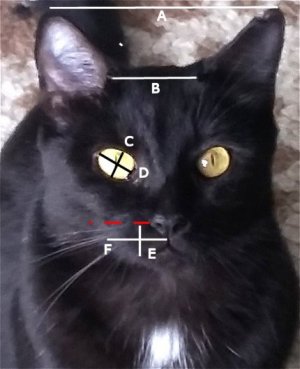Your cat's expression can tell when she is in pain.

|
Cats are experts at hiding pain. Survival of the fittest is something cats understand very well, and for a cat, showing pain means being vulnerable. And consequently the humans the cats live with are often completely unaware that their pet is suffering. Even experienced vets struggle to discover whether a cat is in pain. One result is that vets prescribe far fewer painkillers for cats than they do for dogs, because dogs are much better at telling humans when they are unhappy about something. |
'Veterinarians always say the same thing: they are unsure how best to assess pain, and they're not comfortable doing it because they don't feel they have the right assessment tools', said Daniel Pang, co-author of a study on cat pain. He is part of a group of researchers from the University of Calgary in Canada which is studying feline facial expressions to see how they express pain. (read also Is your cat in pain? - Here's how the experts can tell.)
This is not a unique approach. When humans are in pain they grimace - and so too do many animals. Diagnosing pain from changes in the facial expression has been possible with mice, rats, rabbits, horses, sheep, piglets and even ferrets.
It was time to find out what cats' faces can reveal. Rather than inflict gratuitous pain on innocent felines, the researchers selected 31 cats already diagnosed with abdominal conditions which caused pain, along with 20 healthy cats as a control group. The cats were of different breeds and approximately half of them were males and half females.
Video recordings were made of each cat. The cats in pain were videoed before, and an hour after they were given painkillers. The images were then used to analyse facial expressions which were mapped on to what the researchers called the 'Feline Grimace Scale' (FGS).

The FGS measures pain by analysing the positions of the ears, head, and whiskers, whether the cat's eyes are open or closed, and muzzle tension. The picture above shows how these analysis were made. Various lines on the cats' faces change with tension - and facial tension is an indication of moderate or severe pain. Statistical comparison between the healthy cats and cats first in pain, and then after the administration of painkillers, revealed some interesting data.
Ear analysis - A/B - the straighter the ears, the more relaxed the cat. (The average tilt for healthy cats was 2.85, as compared to an average of 2.34 for cats in pain.)
Eyes - C/D - round eyes (not pupils!) are a sign of a relaxed cat (the mean score was 0.79 for healthy cats to 0.50 for ill cats).
Muzzle tension - E/F. (The mean score was 0.7 for healthy controls and 0.5 for the others.)
In addition to the above, the researchers looked at the position of the head and whiskers. Tension of the muzzle will make the cat's whiskers point horizontally or even slightly upward. It was also observed that cats tend to tilt their heads to the side when they are in pain.
| Feline Grimace scale - Whiskers | |
 |  |
| No sign | Painful sign |
The FGS goes from 0 (no signs of pain) to 1 (moderate sign) and 2 (obvious distress). There was enough of a clear distinction between the healthy control group and the cats with abdominal pain to allow the researchers to make a confident diagnosis of pain even when the cat showed no other signs of distress.
So although cats try to hide their pain and discomfort, their faces can't lie. The feline grimace scale helps vets to decide - among other things - how badly the cat needs painkillers. The system was designed primarily for vets, but because the system is easy to use, you might want to look at your cat while she is relaxed and healthy, and if you later see the changes described here, you should consider a visit to the vet.
Reference
Marina C. Evangelista, Ryota Watanabe, Vivian S. Y. Leung, Beatriz P. Monteiro, Elizabeth O’Toole, Daniel S. J. Pang & Paulo V. Steagall. Facial expressions of pain in cats: the development and validation of a Feline Grimace Scale. Scientific Reports (2019) vol 9, Article number: 19128
https://www.nature.com/articles/s41598-019-55693-8#citeas
Note: This information is for guidance only. It is not intended to replace consultation with a licensed practitioner.

